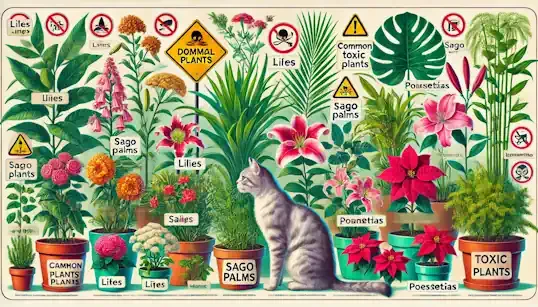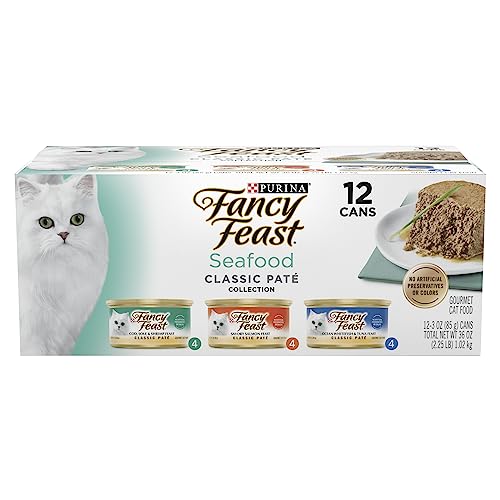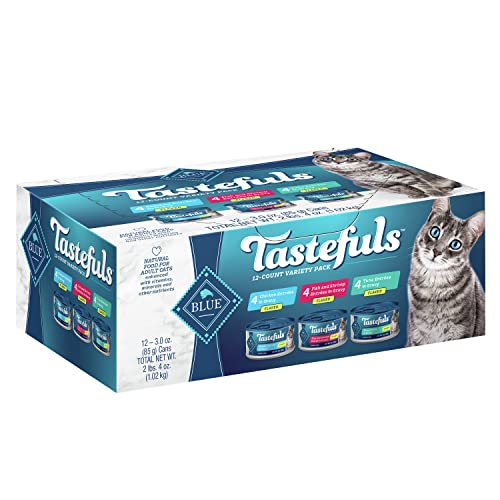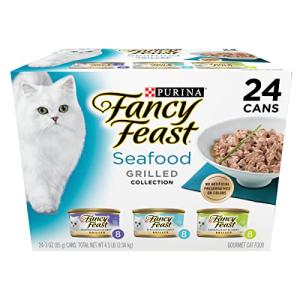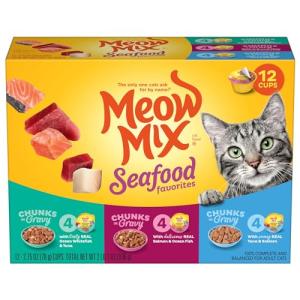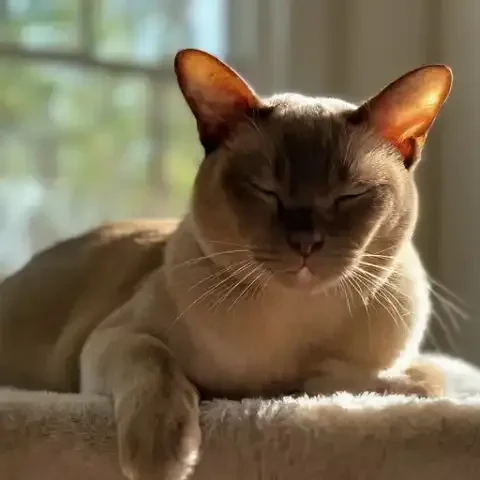You adore the vibrant touch houseplants bring to your home, breathing life and color into your living spaces. And of course, your feline companion, with their playful antics and comforting purrs, completes the picture of domestic bliss. But have you ever paused to consider if these two beloved aspects of your home – your plants and your kitty – are truly compatible? The seemingly innocent combination of cats and plants can, in fact, harbor hidden dangers. While your feline friend might seem to admire your leafy décor from afar, their natural curiosity and playful instincts could lead them to nibble, paw, or even ingest parts of your houseplants. And the surprising truth is, many of the plants we commonly welcome into our homes can pose a serious, even life-threatening, threat to our curious kitties. Are you truly aware of the potential plant-based perils lurking within your very own home?
It’s easy to assume that because plants are "natural," they must be safe. However, nature is full of potent chemicals, and many plants have evolved defenses against herbivores, including toxins that can be incredibly harmful when ingested by animals, including our feline companions. This article aims to illuminate the often-overlooked risks that houseplants can pose to cats. We'll guide you through a landscape of common household plants that are toxic to cats, explaining why they're dangerous, what symptoms to watch for if your cat has ingested something harmful, and most importantly, what you can do to create a safe and plant-filled environment for both you and your beloved feline friend. Our goal is to empower you with the knowledge to identify potential plant hazards, react effectively in case of ingestion, and ultimately, to make informed choices that ensure the well-being of your kitty in a plant-loving home.
But why exactly are plants such a potential hazard to cats? What is it about our feline friends that makes them vulnerable to plant toxins? Several factors contribute to this risk, stemming from their natural instincts and behaviors. Firstly, cats are inherently curious creatures. Especially kittens and younger cats are driven by an insatiable desire to explore their environment. This exploration often involves investigating objects with their senses – sight, smell, touch, and yes, taste. Plants, with their interesting textures, shapes, and sometimes dangling leaves, can be incredibly alluring to a curious cat. Chewing and nibbling are also natural feline behaviors. Cats often explore objects with their mouths, and the texture of leaves and stems can be particularly appealing to chew on. This isn't always about hunger; it's part of their investigative process, a way of interacting with and understanding their surroundings. While less common in cats fed high-quality, balanced commercial cat food, in some instances, a cat might chew on plants due to perceived dietary deficiencies. In very rare cases, they might be seeking specific nutrients that they instinctively feel are lacking. Finally, an often-cited, though perhaps somewhat overstated, reason for plant consumption is hairball management. It's sometimes suggested that cats eat plants to induce vomiting and expel hairballs. However, cats don't instinctively know which plants are safe and which are toxic. If a cat tries to use a plant for hairball relief, they could just as easily choose a toxic plant as a safe one, leading to unintended and dangerous consequences.
The types of toxins found in plants are incredibly diverse, and their effects on cats can vary widely depending on the plant species and the specific toxic compounds it contains. It's crucial to understand that plant toxicity is not a monolithic concept; different plants employ different chemical defenses. These toxins can affect various organ systems within a cat's body. Some primarily target the gastrointestinal system, causing vomiting, diarrhea, and abdominal distress. Others can be nephrotoxic, damaging the kidneys, or hepatotoxic, affecting the liver. Cardiac toxins can disrupt heart function, while neurotoxins can impact the nervous system, leading to tremors, seizures, or neurological dysfunction. The severity of a reaction to plant poisoning is influenced by several factors. The specific type of plant ingested is paramount, as some plants are mildly irritating while others are acutely and rapidly fatal. The amount of plant material ingested also plays a crucial role – a small nibble might cause mild irritation, while a larger consumption can lead to severe poisoning. Finally, the individual cat's size, age, and overall health condition will affect how they react to plant toxins. A small kitten or a cat with pre-existing health issues may be more vulnerable than a healthy adult cat.
Let's delve into the specifics of some of the most dangerous plants for cats, creating a guide to help you identify and avoid these potential hazards in your home. We'll start with the most critical warning: Lilies. Lilies are not just somewhat toxic to cats; they are extremely and acutely dangerous. This cannot be overstated. All types of true lilies, belonging to the Lilium and Hemerocallis genera – think Easter lilies, Tiger lilies, Asiatic lilies, Daylilies, and many others – pose a severe threat. It’s not just the flower or leaves that are toxic; all parts of the lily plant are poisonous to cats. This includes the flower petals, leaves, stems, pollen, and even the water in a vase that has held lilies. The exact toxin in lilies that causes such devastating effects in cats remains scientifically unidentified, which makes it even more challenging to counteract. However, we know that lilies cause acute kidney failure in cats. This is not a slow-developing toxicity; lily poisoning can rapidly lead to severe and irreversible kidney damage.
The symptoms of lily poisoning in cats are serious and require immediate veterinary intervention. Initial signs often include vomiting, lethargy (unusual tiredness and lack of energy), and loss of appetite. As kidney failure progresses, dehydration becomes a significant concern. You might observe changes in urination – initially, increased urination as the kidneys struggle, which can then progress to decreased urination and eventually, complete cessation of urine production as kidney function shuts down. Without prompt and aggressive veterinary treatment, lily poisoning is often fatal to cats. If you even suspect that your cat has ingested any part of a lily plant, even a small amount of pollen, treat it as an emergency. Contact your veterinarian or an emergency animal hospital immediately. Time is absolutely critical in lily poisoning cases, and prompt treatment dramatically increases the chances of survival.
Another category of toxic plants contains insoluble calcium oxalate crystals. These crystals are microscopic, needle-shaped structures within the plant tissue. When a cat chews or ingests plants containing these crystals, they act like tiny, irritating needles, causing immediate discomfort. Examples of common houseplants containing these oxalate crystals include Dieffenbachia, often known as Dumb Cane, Philodendron, a very popular and widely available houseplant, Peace Lily (despite its misleading name, it's not a true lily but Spathiphyllum and contains oxalates), Calla Lily (Zantedeschia, another non-true lily with oxalates), and Elephant's Ear (Caladium).
The symptoms of oxalate crystal poisoning are typically centered around the mouth and gastrointestinal tract. You might observe oral irritation, characterized by your cat pawing at their face or mouth, excessive drooling as their mouth becomes painful and inflamed, and vomiting. Difficulty swallowing can also occur if the irritation and swelling are severe in the throat. While oxalate crystal poisoning is usually not fatal, it is incredibly uncomfortable and painful for your cat. In severe cases, the swelling in the mouth and throat can become significant enough to potentially obstruct the airway, requiring veterinary intervention.
Moving on, some plants contain saponins, which are soap-like glycosides that can irritate the digestive tract. Plants containing saponins tend to cause gastrointestinal upset rather than the more severe organ damage seen with lilies or cardiac glycosides. Examples of saponin-containing plants include English Ivy (Hedera helix), a common climbing vine where both the leaves and berries are toxic, Aloe Vera, the popular succulent whose sap can cause digestive issues, and Asparagus Fern (Asparagus setaceus, not a true fern), which can cause GI upset and skin irritation upon contact or ingestion. The symptoms of saponin poisoning are primarily gastrointestinal. You might see vomiting, diarrhea, excessive drooling, and abdominal pain in your cat. Generally, saponin poisoning results in mild to moderate gastrointestinal upset, and it's usually not life-threatening, but it will certainly make your cat feel unwell.
Finally, we must address plants containing cardiac glycosides. These are a group of toxins that have a more serious impact, directly affecting heart function. Examples of plants containing cardiac glycosides include the notoriously toxic Oleander (Nerium oleander), where all parts of the plant are highly poisonous, Foxglove (Digitalis purpurea), the well-known source of the heart medication Digoxin but also highly toxic in its natural form, and Lily of the Valley (Convallaria majalis, again, a misleading "lily" name – it's not a true lily but contains cardiac glycosides). The symptoms of cardiac glycoside poisoning are significantly more concerning and potentially life-threatening. You may observe vomiting and diarrhea initially, but these can quickly progress to weakness, tremors, and abnormal heart rates (either too fast or too slow). Seizures can occur in severe cases, and cardiac glycoside poisoning can ultimately lead to death due to heart failure. Cardiac glycoside poisoning is a veterinary emergency, and immediate and intensive veterinary care is crucial if you suspect your cat has ingested any of these plants.
Beyond these key categories, several other common houseplants are worth noting for their toxicity to cats. Azaleas and Rhododendrons contain grayanotoxins, which can cause cardiovascular and neurological effects. Sago Palms (Cycas revoluta) are extremely toxic, particularly the seeds, containing cycasin that leads to liver failure and neurological signs. Castor Bean (Ricinus communis) seeds contain ricin, a highly potent toxin that can cause severe gastrointestinal distress, organ damage, and potentially be fatal. Tulips, Hyacinths, and Daffodils, especially their bulbs, contain alkaloids that can cause gastrointestinal upset, drooling, tremors, and in severe cases, convulsions. Even Chrysanthemums (Mums) contain sesquiterpene lactones and pyrethrins, which can cause mild gastrointestinal upset and skin irritation.
It's important to differentiate between severely toxic plants and those that are less dangerous but can still cause problems. There is a category of plants that are considered less severely toxic but can still cause discomfort and issues for your kitty. These plants often contain lower concentrations of toxins or toxins that primarily cause milder gastrointestinal irritation. Examples include Pothos (Devil's Ivy), which, like Philodendron, contains oxalate crystals but generally causes a less severe reaction than Dieffenbachia. Spider Plants (Chlorophytum comosum) are often listed as safe, and are generally considered low-toxicity, but some cats can experience mild hallucinogenic effects from them (though this is debated) and some may experience stomach upset after ingestion. Ficus species (Fig Trees) contain irritating sap that can cause discomfort if ingested or upon skin contact. Symptoms from these less severely toxic plants typically involve mild gastrointestinal upset: vomiting, diarrhea, drooling, and loss of appetite. These symptoms are usually mild and self-limiting, meaning they often resolve on their own, but it’s still important to monitor your cat and consult your veterinarian if you are concerned or if symptoms worsen.
Some plants primarily cause skin irritation upon contact, rather than internal poisoning through ingestion. While less common with cats due to their fur coat, sparsely furred areas could be affected. The most common culprits here are Poison Ivy, Poison Oak, and Poison Sumac (Toxicodendron species). While less likely to be grown as indoor houseplants, they could be present if you bring in outdoor cuttings or if your cat has outdoor access and then comes into contact with you or indoor surfaces. Exposure to these plants can cause redness, itching, and blisters on the skin that comes into contact with the plant's sap.
The good news is that you don't have to choose between a plant-filled home and a safe environment for your cat. There are many safe plants for cats, allowing you to enjoy greenery without constant worry. Consider these cat-friendly options: Spider Plants are often considered safe, despite the slight caveat mentioned earlier, and are popular and easy to grow. African Violets are beautiful flowering plants that are non-toxic to cats. Boston Ferns, a classic and elegant fern, are also considered safe. Orchids, particularly Phalaenopsis orchids, are another elegant and generally safe flowering option. Prayer Plants (Maranta leuconeura) with their interesting leaf movements are also non-toxic. Many varieties of Peperomia are cat-safe and offer diverse leaf textures and appearances. Cast Iron Plants (Aspidistra elatior) are incredibly hardy and non-toxic. Swedish Ivy (Plectranthus verticillatus) is easy to grow and cat-safe. Areca Palms (Dypsis lutescens) are a safe palm option for larger greenery. And crucially, consider providing Cat Grass. This is often a mix of oat, wheat, rye, or barley grass specifically grown for cats to chew on. Cat grass is a fantastic way to redirect your cat's natural plant-chewing instincts to a safe and beneficial outlet, and it can indeed help with hairball management. Finally, Catnip (Nepeta cataria) and Catmint (Nepeta mussinii) are both safe and enjoyable for cats. While catnip causes temporary behavioral changes, it's not toxic and many cats relish it.
Despite your best preventative efforts, accidents can happen. If you suspect your cat has ingested any part of a toxic plant, stay calm, but act quickly. Time is of the essence, especially with highly toxic plants like lilies and cardiac glycoside-containing plants. Begin by assessing your cat's symptoms. Look for any of the warning signs we've discussed: vomiting, diarrhea, excessive drooling, lethargy, tremors, seizures, difficulty breathing, pawing at the face, etc. If possible, identify the plant your cat may have chewed on. Knowing the plant is critical information for your veterinarian. Take a photo of the plant, or if it’s safe to do so without further contaminating yourself (wear gloves), bring a sample of the plant with you to the vet. Contact your veterinarian IMMEDIATELY. Do not wait to see if symptoms worsen. Call your regular veterinarian or, if it’s after hours, an emergency animal hospital right away. This is a true emergency situation. You can also contact a Pet Poison Control Helpline, such as the ASPCA Animal Poison Control Center or the Pet Poison Helpline. These resources are staffed by veterinary toxicologists and can provide invaluable guidance, although consultation fees may apply. Do NOT attempt to induce vomiting at home unless specifically instructed to do so by a veterinarian or poison control expert. Inducing vomiting can be harmful in certain poisoning situations, and it’s crucial to get professional guidance first. When you go to the vet, bring a sample of the plant or a clear photograph to help with rapid diagnosis and treatment.
Prevention is always the best medicine. Take proactive steps to create a plant-safe environment for your kitty. Start by identifying all the houseplants in your home. Use online resources or plant identification apps if you're unsure of names. Compare your plant list against lists of toxic plants for cats. If you find any that are on the dangerous lists, seriously consider removing them from your home. If you are unwilling to part with a toxic plant, implement strategic plant placement. Keep toxic plants completely out of your cat's reach. Utilize high shelves, hanging planters, or rooms your cat doesn’t have access to. Remember that cats are agile climbers and jumpers, so “out of reach” truly means inaccessible, not just slightly elevated. Provide safe alternatives! Offer cat-friendly plants like cat grass and catnip as safe and appealing outlets for your cat's natural plant-chewing urges. Make these safe plants accessible and enticing. You can explore deterrents, but use them cautiously. Bitter apple spray or similar pet-safe deterrent sprays might discourage some cats from chewing, but their effectiveness varies, and always test them on a small plant area first to ensure they don’t damage the foliage. Physical barriers like citrus peels or pine cones placed around plant bases might deter some cats due to scent aversion, but they are not foolproof solutions. Avoid using harsh chemicals or truly toxic deterrents as these could also inadvertently harm your cat. While training and redirection can be attempted, realistically, it’s challenging to train a cat to completely ignore plants. Redirection to appropriate chew toys is more effective. Finally, be extra vigilant with kittens and young cats. Their heightened curiosity and exploratory nature make them more prone to plant-related incidents.
Ultimately, enjoying the beauty of houseplants and the companionship of your cat doesn’t have to be mutually exclusive. While many common houseplants do pose risks to cats, with a little knowledge and proactive effort, you can create a home that is both lush with greenery and safe for your beloved feline companion. The key is knowledge – being informed about which plants are toxic, understanding the potential symptoms of poisoning, and knowing what to do in an emergency. By taking steps to identify and remove or secure toxic plants, providing safe alternatives, and remaining vigilant, you can confidently cultivate a harmonious environment where both your plants and your kitty can thrive, side-by-side, safely and happily.
